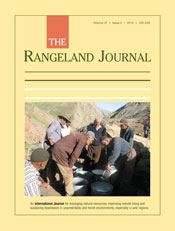RJ14090The future of food production research in the rangelands: challenges and prospects for research investment, organisation and human resources
The future of research on food production in the rangelands globally is reviewed and the challenges and prospects for research investment, the organisation of research and human resources issues highlighted. The major concerns identified are the lack of funds for rangelands research at both applied and strategic levels, and the unavailability of a well educated and trained workforce, which may hamper the rangelands from contributing sufficiently to global food security and national conservation goals.




